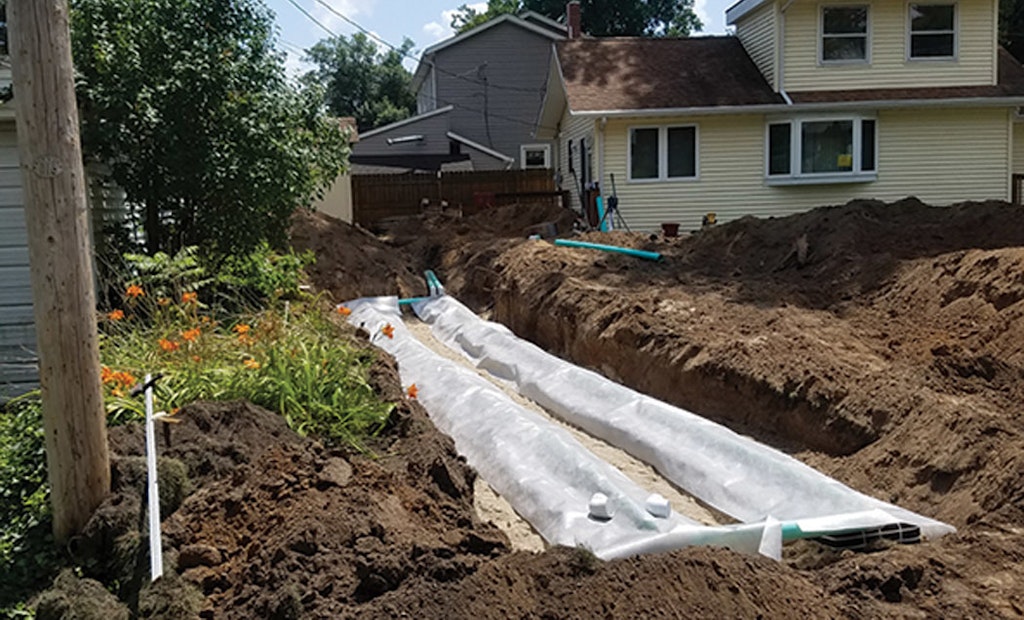Interested in Onsite Systems?
Get Onsite Systems articles, news and videos right in your inbox! Sign up now.
Onsite Systems + Get AlertsSubsurface bed system solves tight site challenges
Problem: A two-bedroom home built in 1925 in La Porte, Indiana, failed the septic inspection during a property transfer. The existing system included a saturated dry well and a septic tank that needed to be abandoned. A soil report was conducted and showed a 0.5 gallon-per-square-foot loading rate; a future system required 402 square feet in order to meet Indiana State Department of Health requirements, but the available space was limited to the point where it looked like a holding tank would be the only option. Setback constraints included the well, the to-be-abandoned dry well, and the house itself. Additionally, the septic tank needed to be replaced.
Solution: The Indiana Onsite Wastewater Professionals Association and installer Rod Swank from A-Hope OS Systems concluded that an Eljen Corp. GSF Geotextile Sand Filter System would fit on the site. Of the five system types approved in Indiana for the GSF system, a subsurface bed was selected; 22 A42 GSF modules met the sizing and square footage requirements of the system.
Result: The bed system using gravity distribution was installed utilizing two laterals of 11 modules each, with an overall bed dimension of 9 feet wide by 45 feet long. The new homeowner now has a code-compliant system with minimal maintenance requirements. 800/444-1359; www.eljen.com.
Additive used to treat blockage in drainfield line
Problem: North Carolina homeowners called J.C. Johnson Plumbing & Septic when they saw water surfacing 55 to 60 feet into the drainfield area. Technician Jim Sparrow ran a camera through the line exiting the tank and quickly determined the line was almost full of sludge.
Solution: Sparrow installed a clean-out on the outlet end of the tank and then poured bioForce Maxx from Chempace Corp. into the line. The septic tank was also pumped down to make sure no water would be going into the field for a week. After approximately one month without incident, a camera was used to inspect the line. The first 30 feet had gone from being full of sludge to only about a 1/4 inch on the bottom. The line was treated again with another 5-gallon pail of bioForce Maxx.
Result: To date, there has been no further surfacing water in the drainfield. 800/423-5350; www.chempace.com.






